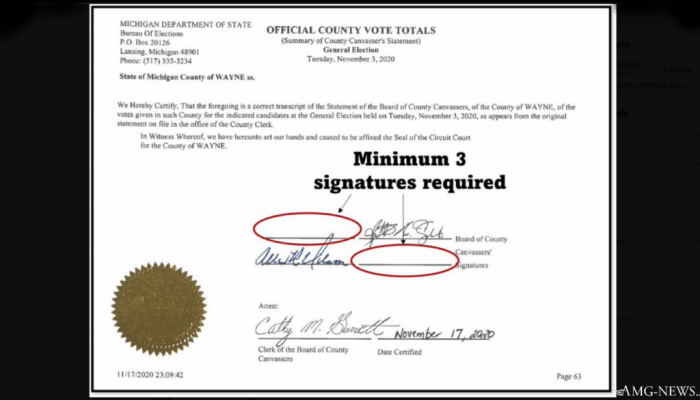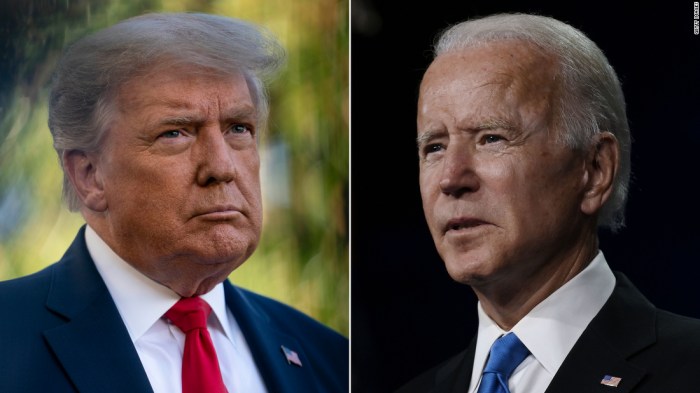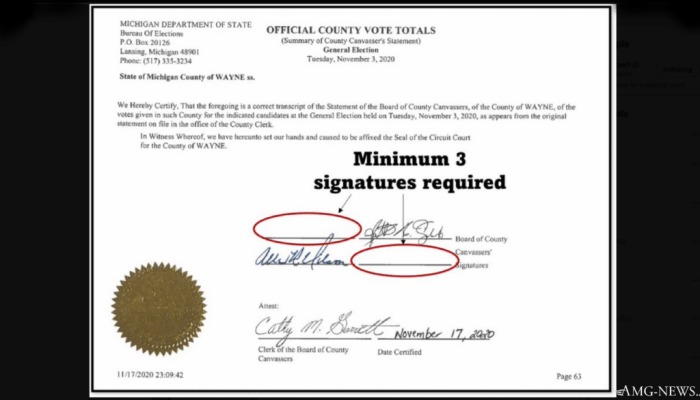
Momentum Builds for Electoral Count Act Overhaul
Momentum builds for overhaul of rules governing the electoral count, a crucial topic that’s sparked debate and calls for reform. The Electoral Count Act of 1887, designed to resolve disputes in presidential elections, has come under scrutiny for its potential vulnerabilities and outdated provisions.
The events of January 6th, 2021, when a mob stormed the U.S. Capitol in an attempt to overturn the election results, further fueled concerns about the Act’s ability to withstand pressure and safeguard the democratic process.
The Act’s historical context, its current shortcomings, and proposed reforms are all under intense examination. Experts and lawmakers alike are grappling with the delicate balance between upholding the integrity of elections and preserving the rights of individual states in the electoral process.
Historical Context of the Electoral Count Act
The Electoral Count Act of 1887, a pivotal piece of legislation in American electoral history, was designed to regulate the process of counting electoral votes for the presidency. It emerged as a direct response to the tumultuous presidential election of 1876, which had been marred by controversy and uncertainty.
The Act’s creation was driven by the need to establish a clear and consistent framework for resolving disputes and ensuring a smooth transition of power.
The Disputed Election of 1876
The 1876 election was a highly contested affair between Republican candidate Rutherford B. Hayes and Democratic candidate Samuel J. Tilden. The outcome hinged on the electoral votes from four states—South Carolina, Florida, Louisiana, and Oregon—where the results were disputed. The Electoral Commission, a body established to resolve the impasse, ultimately awarded all 20 contested electoral votes to Hayes, securing his victory.
This decision, however, was highly controversial and fueled widespread accusations of corruption and partisan bias.
Key Provisions of the Electoral Count Act
The Electoral Count Act of 1887 sought to address the shortcomings exposed by the 1876 election by establishing a clear and structured process for counting electoral votes. Its key provisions included:
- Role of the President of the Senate:The Act designates the President of the Senate as the presiding officer during the counting of electoral votes. This role, traditionally held by the Vice President, was intended to ensure impartiality and prevent any potential conflicts of interest.
- Process for Resolving Disputes:The Act Artikels a specific procedure for resolving disputes that may arise during the counting of electoral votes. It allows for objections to be raised by members of both the House and Senate, but requires a majority vote in both chambers to overturn the results certified by state officials.
- Role of the States:The Act emphasizes the central role of states in certifying electoral votes. It specifies that the governor of each state is responsible for transmitting the state’s electoral votes to the President of the Senate, and that these votes are considered valid unless there is evidence of fraud or irregularities.
Current Concerns and Criticisms of the Electoral Count Act: Momentum Builds For Overhaul Of Rules Governing The Electoral Count

The Electoral Count Act (ECA) of 1887, designed to clarify the process for counting electoral votes, has been the subject of considerable debate in recent years. While intended to provide a framework for resolving disputes, its ambiguities and outdated provisions have raised concerns about its potential for misuse and its vulnerability to challenges that could undermine the integrity of presidential elections.
Potential for Misuse and Exploitation
The ECA’s ambiguities have led to concerns about its potential for exploitation, particularly in situations where one party seeks to overturn the results of an election. The Act’s provisions, which were drafted in a different political and technological context, are seen as inadequate to address the complexities of modern elections.
- The “Safe Harbor” Provision:The ECA’s “safe harbor” provision allows states to determine their electors by a certain deadline, after which Congress is bound to accept those electors. However, critics argue that this provision could be manipulated by state legislatures to overturn the will of the voters, especially if a state legislature is controlled by a different party than the one that won the popular vote.
- The Role of the Vice President:The ECA assigns the role of presiding officer over the counting of electoral votes to the Vice President. Critics argue that this gives the Vice President, who is also a candidate for the presidency, undue power and influence over the outcome of the election.
The momentum for an overhaul of the rules governing the electoral count is gaining steam, and while it might seem like a dry topic, it’s actually quite fascinating. Just like finding the perfect topping for your cake, store bought granola is the crispy crunchy topping your cake needs , these changes could add a crucial layer of clarity and stability to our electoral process.
The debate over these rules is sure to continue, but one thing is clear: we need to ensure a smooth and transparent transfer of power, and that’s something we should all be able to agree on.
- The “Single Objection” Rule:The ECA requires only one member of each chamber of Congress to object to a state’s electoral votes to trigger a debate and potential vote on whether to accept those votes. Critics argue that this low threshold makes it too easy for a small number of lawmakers to disrupt the electoral count process and potentially overturn the results of an election.
Arguments for Reform
In light of these concerns, there is a growing consensus that the ECA needs to be reformed to ensure that the electoral count process is conducted fairly and accurately. Reformers argue that the ECA’s ambiguities and outdated provisions create unnecessary vulnerabilities and could lead to a constitutional crisis.
The momentum for reforming the Electoral Count Act is undeniable, with many seeing it as a crucial step towards safeguarding our democracy. This push for change is reminiscent of the recent controversy surrounding Whole Foods’ request for handprints, which raised concerns about data privacy and potential misuse.
Just as the public scrutinizes Whole Foods’ intentions, so too are lawmakers examining the Electoral Count Act, aiming to ensure its clarity and prevent future challenges to the legitimacy of presidential elections.
- Clarifying the Role of State Legislatures:Reformers advocate for clarifying the role of state legislatures in determining electors. They argue that the ECA should explicitly state that state legislatures cannot overturn the results of an election by appointing electors who do not reflect the will of the voters.
- Strengthening the “Safe Harbor” Provision:Reformers propose strengthening the “safe harbor” provision by requiring states to certify their electoral votes in a more transparent and verifiable manner. This would reduce the potential for manipulation by state legislatures and ensure that the electoral count process is more secure.
- Modifying the Role of the Vice President:Reformers suggest modifying the role of the Vice President in the electoral count process. Some propose removing the Vice President’s role entirely, while others suggest creating a more neutral role for the presiding officer, such as a Supreme Court justice.
- Raising the Threshold for Objections:Reformers advocate for raising the threshold for objections to electoral votes. They argue that the “single objection” rule is too low and makes it too easy for a small number of lawmakers to disrupt the electoral count process.
Potential Consequences of Inaction, Momentum builds for overhaul of rules governing the electoral count
Failure to reform the ECA could have serious consequences for the integrity of future presidential elections. The ambiguities and outdated provisions of the Act could create opportunities for legal challenges, political maneuvering, and even attempts to overturn the results of an election.
- Increased Litigation:The ambiguities of the ECA could lead to an increase in litigation surrounding the electoral count process. This could delay the certification of election results and create uncertainty about the outcome of the election.
- Erosion of Public Trust:Failure to reform the ECA could erode public trust in the electoral process. If the public believes that the election results can be overturned by political maneuvering or legal challenges, it could undermine faith in democracy.
- Constitutional Crisis:In the most extreme scenario, failure to reform the ECA could lead to a constitutional crisis. If there is a dispute over the electoral count and no clear resolution is reached, it could create a situation where there is no clear winner of the presidential election.
Proposed Changes and Reform Efforts

The Electoral Count Act (ECA) has been the subject of intense scrutiny and debate, particularly following the events of January 6, 2021. Numerous proposals have emerged to address the perceived weaknesses in the current law and ensure a more secure and transparent electoral process.
These proposals aim to clarify ambiguities, strengthen safeguards, and enhance the integrity of the electoral count. The primary focus is on ensuring that the process is conducted fairly and accurately, preventing any attempts to overturn legitimate election results.
Clarifying the Role of the Vice President
The ECA grants the Vice President the authority to preside over the joint session of Congress to count electoral votes. However, the law’s language regarding the Vice President’s role is ambiguous, which has led to concerns about the potential for abuse.
The push for a revamp of the electoral count rules is gaining steam, with lawmakers and experts alike calling for greater clarity and safeguards. This debate highlights the importance of understanding the legal framework governing presidential records, as documented communication can play a crucial role in interpreting and upholding the electoral process.
For a deeper dive into this complex legal landscape, check out this insightful article on a look at the law governing presidential records. Ultimately, ensuring the integrity of our elections requires a comprehensive approach, encompassing both the electoral count and the preservation of vital records.
One proposed change is to clarify the Vice President’s role as purely ceremonial, emphasizing that the Vice President’s only function is to count the votes as certified by the states. This would remove any doubt about the Vice President’s ability to influence the outcome of the count.Another proposal suggests explicitly stating that the Vice President has no authority to reject or alter the electoral votes submitted by the states.
This would further solidify the Vice President’s role as a neutral observer in the electoral count process.
Strengthening the Process for Objecting to Electoral Votes
The ECA allows members of Congress to object to electoral votes, but the process for doing so is relatively loose and open to abuse. Some proposals aim to strengthen the process by requiring a higher threshold for objections, such as a majority vote in both houses of Congress.Others suggest requiring objections to be based on specific legal grounds, such as evidence of fraud or irregularities in the state’s election process.
This would prevent frivolous or politically motivated objections from delaying or disrupting the count.
Establishing a More Robust Process for Resolving Disputes
The ECA lacks a clear mechanism for resolving disputes that may arise during the electoral count. Proposals have been made to establish a more robust process, potentially involving an independent body or commission, to adjudicate such disputes.This body could be tasked with reviewing objections, examining evidence, and making a final determination on the validity of electoral votes.
The creation of such a body would ensure a more impartial and transparent process for resolving disputes.
Enhancing Transparency and Public Access
Several proposals focus on enhancing transparency and public access to information about the electoral count. These proposals include:* Requiring states to submit their electoral votes electronically, allowing for real-time tracking of the count.
- Establishing a public website where all information about the electoral count, including objections and rulings, is readily accessible.
- Increasing public access to the joint session of Congress, allowing for greater transparency in the process.
These measures would increase public confidence in the integrity of the electoral count and ensure that the process is open and accountable.
Political Landscape and Potential for Change
The political landscape surrounding reform efforts to overhaul the Electoral Count Act is complex and deeply intertwined with the broader partisan divisions in American politics. The potential for bipartisan support for reform is uncertain, with varying degrees of enthusiasm and skepticism across the political spectrum.
Bipartisan Support and Opposition
The prospect of bipartisan support for reform is contingent on several factors, including the specific proposals put forward and the political climate at the time. While some reform measures, such as clarifying the role of the vice president, may enjoy broader support, others, like strengthening the certification process, could face more resistance.
- Potential for Bipartisan Support:Some areas of potential agreement include clarifying the vice president’s role, establishing a clear process for resolving disputes, and enhancing transparency in the electoral count. These areas have garnered interest from both Democrats and Republicans, suggesting a possible path toward consensus.
- Potential for Opposition:However, significant partisan divisions remain, particularly regarding measures aimed at preventing future attempts to overturn election results. Republicans, particularly those aligned with former President Trump, have shown resistance to reforms that could limit their ability to challenge election outcomes.
Role of Key Stakeholders
Key stakeholders, including Congress, the judiciary, and advocacy groups, play crucial roles in shaping the debate and influencing the potential for reform.
- Congress:Congress holds the primary responsibility for enacting any changes to the Electoral Count Act. The Senate and House of Representatives must reach agreement on legislation before it can be sent to the president for signature. The composition of Congress, particularly the balance of power between the two parties, will heavily influence the likelihood of reform.
- The Judiciary:The judiciary plays a critical role in interpreting the Electoral Count Act and resolving any legal challenges to its application. The Supreme Court, in particular, has the potential to significantly impact the direction of reform efforts.
- Advocacy Groups:Advocacy groups, both for and against reform, are actively engaged in lobbying Congress and the public. These groups raise awareness, mobilize public opinion, and exert pressure on policymakers to support or oppose specific reform proposals.
Factors Influencing Change
Several factors, including public opinion, the political climate, and the timing of reform efforts, will shape the potential for change.
- Public Opinion:Public support for reform is crucial, as it can incentivize policymakers to act. The level of public concern over the integrity of elections and the Electoral Count Act will influence the political pressure for reform.
- Political Climate:The political climate, including the level of partisan polarization and the perceived threat to democracy, will significantly impact the willingness of lawmakers to compromise and enact reforms.
- Timing:The timing of reform efforts is critical. If reforms are pursued during periods of heightened political tension, they may be more difficult to achieve. Conversely, if reforms are pursued in a more stable political environment, they may be more likely to succeed.
Impact of Reform on the Electoral Process

Reforming the Electoral Count Act (ECA) could significantly impact the conduct and outcome of future elections. The proposed changes aim to clarify ambiguities in the existing law and address concerns raised by the 2020 election. These reforms have the potential to strengthen the electoral process and ensure a more peaceful transfer of power.
Effects on the Conduct of Elections
Reforms to the ECA could influence the conduct of elections in several ways. For example, clarifying the role of the Vice President in counting electoral votes could reduce the potential for partisan disputes and ensure a more orderly process. Additionally, strengthening the process for challenging electoral results could prevent frivolous objections and ensure that only legitimate claims are considered.
These changes could contribute to a more transparent and credible electoral process.
Implications for States, the Electoral College, and the Peaceful Transfer of Power
Reforming the ECA could also have significant implications for the roles of states, the Electoral College, and the peaceful transfer of power. By clarifying the process for certifying and counting electoral votes, the reforms could strengthen the role of states in the electoral process.
The reforms could also address concerns about the Electoral College, such as the potential for a candidate to win the presidency without winning the popular vote.
“Reforming the Electoral Count Act is essential to ensuring the peaceful transfer of power and protecting the integrity of our elections.”
Senator Amy Klobuchar
Challenges and Opportunities of Reform
Reforming the ECA presents both challenges and opportunities. One challenge is the potential for partisan gridlock, as both Democrats and Republicans may have differing views on the proposed changes. Another challenge is the need to balance the need for clarity and certainty with the need for flexibility to address unforeseen circumstances.
Despite these challenges, reforming the ECA also presents opportunities. The reforms could strengthen the electoral process, enhance the legitimacy of election results, and promote public confidence in the democratic process. The reforms could also help to prevent future attempts to overturn election results, ensuring a more peaceful and stable transfer of power.






